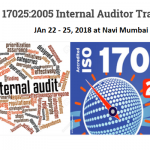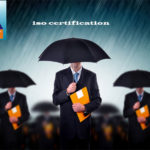ISO 9001 facts & basic information
Â
Preparation of ISO 9001:2008
The ISO 9001 international standard was prepared by ISO’s technical committee, aptly called ISO TC/176 , Quality Management and Quality Assurance, Subcommittee SC 2, Quality systems.
The latest revision of ISO 9001 was officially published on November 14th, 2008. The ISO 9001:2008 version cancels the previous version of ISO 9001:2000. The reasons for the revision are to clarify certain points within the text and enhance its compatibility with ISO 14001:2004.
Process Approach
The ISO 9001 advocates and promotes the use of the process approach in the planning, implementation an improvement of a quality management system, where the Plan-Do-Check-Act method serves as the methodology for the application of this approach.
Integrated Management System
ISO 9001 enables the integration of a quality management system model with other management system models. ISO 9001 could be integrated with ISO 14001 since they are highly compatible. And since OHSAS 18001 takes after ISO 14001 model, it can also be integrated into ISO 9001 quality management system model. Integrated systems induce managent efficiency.
Scope of ISO 9001
The scope or purpose of ISO 9001 is to enable an organization to demonstrate its ability to consistently provide products that meet customer and applicable statutory and regulatory requirements, and aims to enhance customer satisfaction.
ISO 9001 is intended to be generic and applicable to all kinds of organization, regardless of types, sizes or products.
Terms and definitions
The terminology and definitions which are used within the standard are derived from ISO 9000:2005.
Within the context of ISO 9001, the term “product” may also represent intangible services.
General Requirements
ISO 9001 requires that an organization to establish, document, implement and maintain a quality management system and continually improve its effectiveness in accordance with its (ISO 9001) requirements. In order to do this, the organization shall/must
- determine the processes needed for the quality management system and their application throughout the organization,
- determine the sequence and interaction of these processes,
- determine the criteria and methods to ensure the effective operation and control of these processes,
- ensure the availability of resources and information to support the operation and monitoring of these processes,
- monitor, measure and analyze these processes,
- implement necessary actions to achieve planned results and continual improvement of these processes.
Outsourced processes within the quality management system must be adequately controlled and defined.
The processes within the quality management system must relate to mangement activities (Clause 5), resource management (Clause 6), product realization and measurement (Clause 7), analysis and improvement (Clause 8).
Documentation requirements
ISO 9001 requires the quality management system to be documented, which includes:
- A documented quality policy
- Documented quality objectives
- A documented quality manual
- Six specifically defined documented procedures
- Documents that ensure the effective planning, operation, and control of processes such as process documents/SOPs/quality plans, procedures/work instructions , forms, etc.
- Records (filled and filed forms that can occur at any tier level).
Quality Manual
The organization shall/must establish and maintain a quality manual that includes
- the scope of the quality management system, including details of and justification for any exclusions
- the documented procedures that have been established or reference to them,
- a description of the interaction of the processes within the quality management system.
Control of Documents
All documents that are used within the quality management system must be adequately controlled. A documented procedure shall/must be established to define this control, in terms of:
- approval for adequacy prior to issue,
- review, update and re-approval,
- identification of changes and current revision status,
- availability at points of use,
- legibility and identifiably
- identification and control of external documents,
- Prevention of unintended use of obsolete documents, and their identification if retained for any purpose.
Control of Records
Records that are generated from the operation of the quality management system shall/must be controlled. Records are documents that provide evidence of conformance and effectiveness of the quality management system. A documented procedure shall/must be established to defined the controls for their
- identification,
- storage,
- protection,
- retrieval,
- retention, and
- disposition.
All records shall/must remain legible, readily identifiable and retrievable.
Contact Lakshy management consultant Pvt. Ltd. for ISO 9001:2008 certification for your company. We provide the best and cost effective services with easy to implement solutions that results in fast ISO 9001 certification for your company.







